Groundbreaking Exposé Reveals Pain, Desolation, Abuse, and Systemic Neglect at Former Iditarod Champions' Kennels
In late 2018 and early 2019, a PETA eyewitness worked in Alaska’s dog sledding industry. He found dogs denied veterinary care for painful injuries, kept constantly chained next to dilapidated boxes and plastic barrels in the bitter cold and biting wind, and exhausted, dehydrated dogs forced to run hundreds of miles.
Please help us end this Arctic nightmare for dogs!
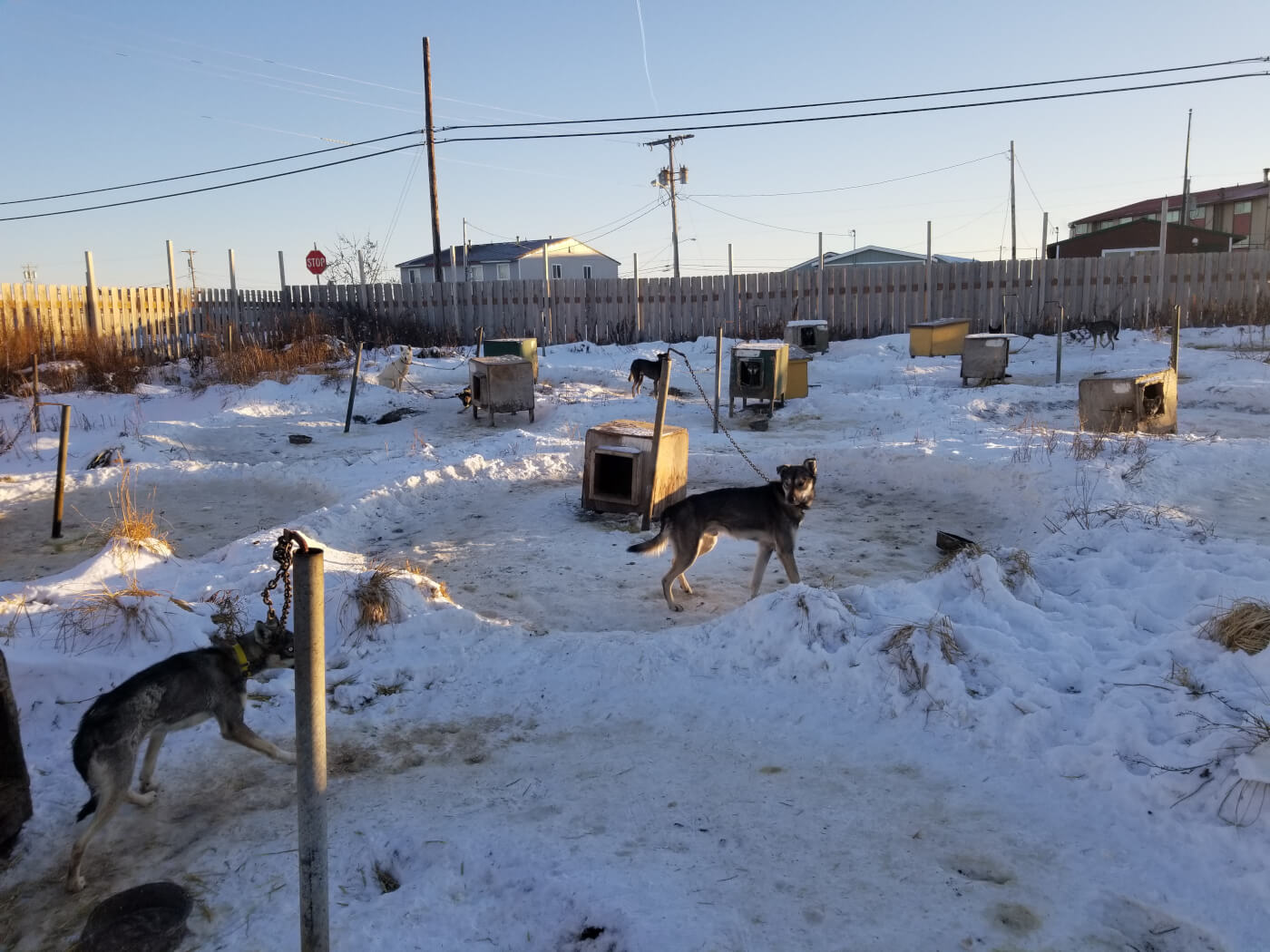
At a kennel operated by former Iditarod champion John Baker and by Katherine Keith, who had two dogs perish during past Iditarod races, PETA’s eyewitness found dozens of frantic dogs, some of whom Keith was training for the 2019 Iditarod (before she pulled out of the race). Baker has competed in the Iditarod 22 times since 1996, winning nearly $603,000.
The dogs’ only respite from a wind chill as low as minus 19 degrees (-28C) was dilapidated, uninsulated boxes, some of which had even collapsed, containing very little, if any, straw for bedding. Dogs were routinely fed a “stew” of rotten and/or moldy meat. They were denied water during training, even when running for over 50 miles, and only ever had access to water in the form of the daily “stew,” which at times was so foul that they couldn’t eat it. Many dogs’ ribs and hips could easily be seen—even beneath their thick fur.
Champion Dog With Painful Arthritis Chained Without Shelter Beside the Frozen Sea
Snickers was one of Baker’s lead dogs in 2011, when he won the Iditarod. But when she was 11 years old, PETA’s eyewitness found her limping and suffering from chronic, painful arthritis.
Rather than providing his elderly lead dog with the veterinary care and comfort that she desperately needed, he chained her beside the frozen sea—all alone and unable to escape the Arctic cold. She had no shelter at all until PETA’s eyewitness built one for her, as the wooden box next to her area was only accessible from an adjacent pen. Baker said that Snickers had suffered from arthritis even when she ran the Iditarod. He admitted that she was “in a lot of pain” and had been for years and that he needed to “put her out of her misery.” He stated that he planned to shoot her but had not yet done it because “I just don’t have a good place to bury her.”
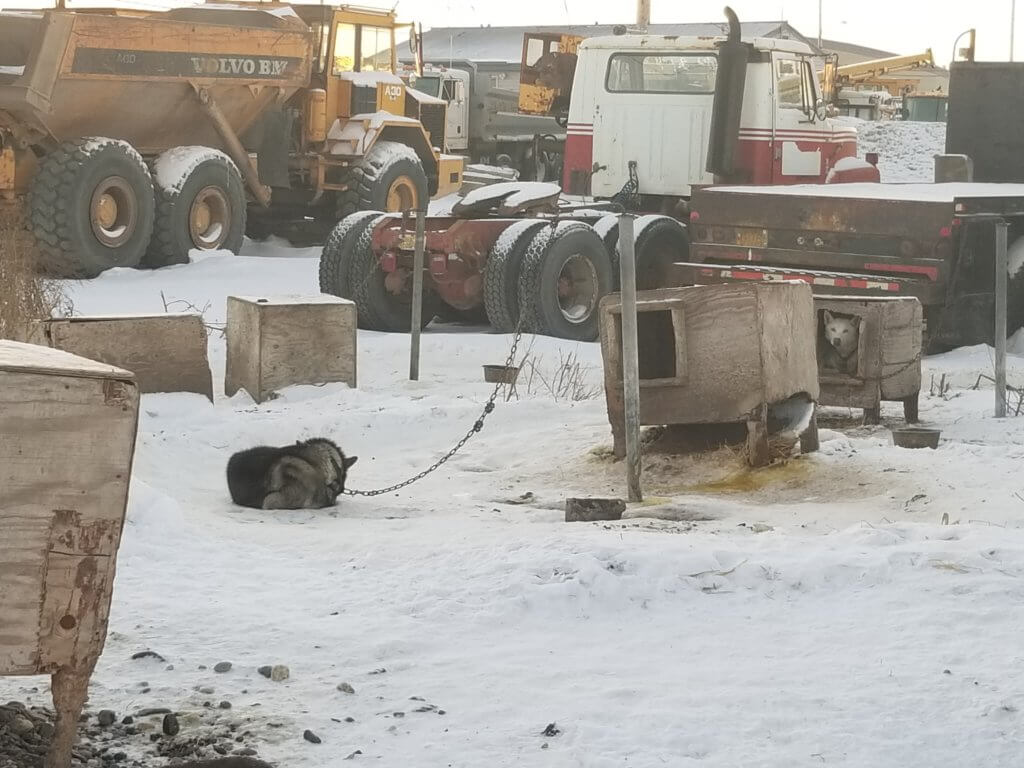

Paralyzed Puppy Left to Drag Herself Through the Snow
Birch was just a puppy when she sustained a crippling, extremely painful spinal cord injury, which left her unable to move around comfortably and struggling just to get in and out of the shelter she had access to—the same box that PETA’s eyewitness had built for Snickers.
Baker and Keith wouldn’t take Birch to a veterinarian. They just chained her up outside and left her there.
Baker admitted that Birch should be “put out of her misery” and that she was “not healthy” but refused the eyewitness’s repeated offers to adopt her or provide her with veterinary care, evidently because anyone who saw her would probably conclude that “we’re being real hard on ’em.”
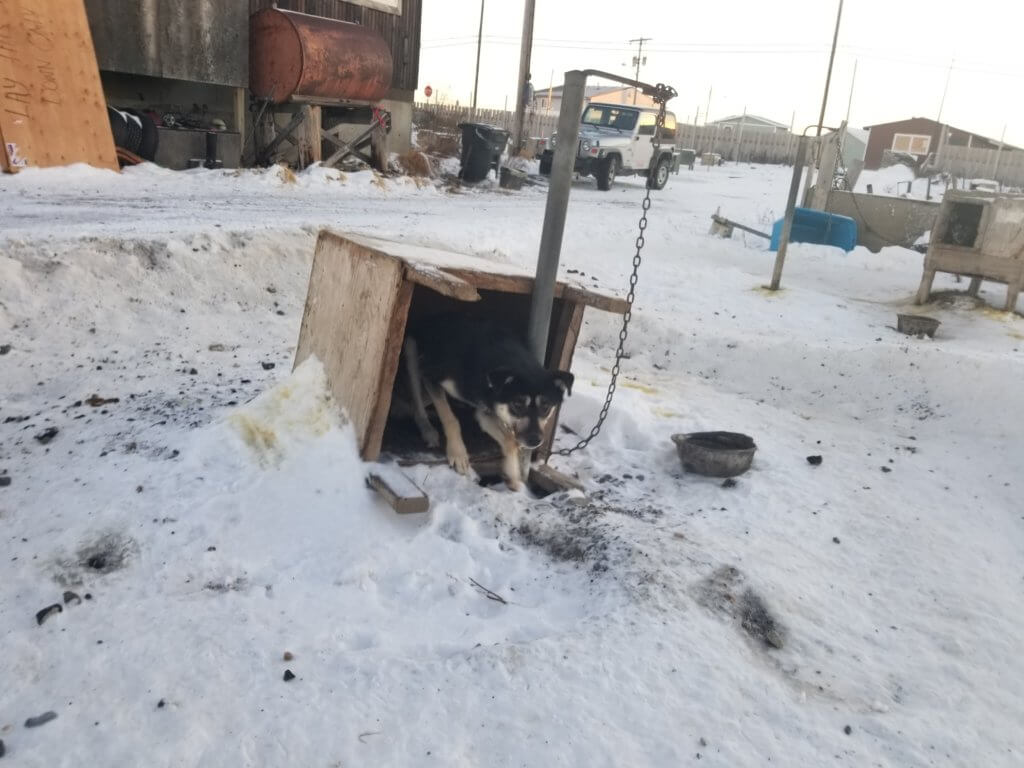
A Dead Dog Is Better Than a Slow Dog
Salt and Pepper were both injured in a fight, and each was unable to bear weight on one leg. But just days later, Keith took them both on a 50-mile run.
One day, as dogs were tied to the front of a Jeep, an exhausted dog became tangled up. Baker refused to untangle her, allowing her to fall down and be dragged along the icy road for one-tenth of a mile, which he said would “teach her” to “reconsider slowing” when she was tired. When another dog slowed down to defecate, Baker said that putting on the brakes would train the dog that it was OK to stop or slow down while defecating and that it would have been better to run the dog over because it’s “better to have a dead dog” than a “dog [who] slows down the team.”
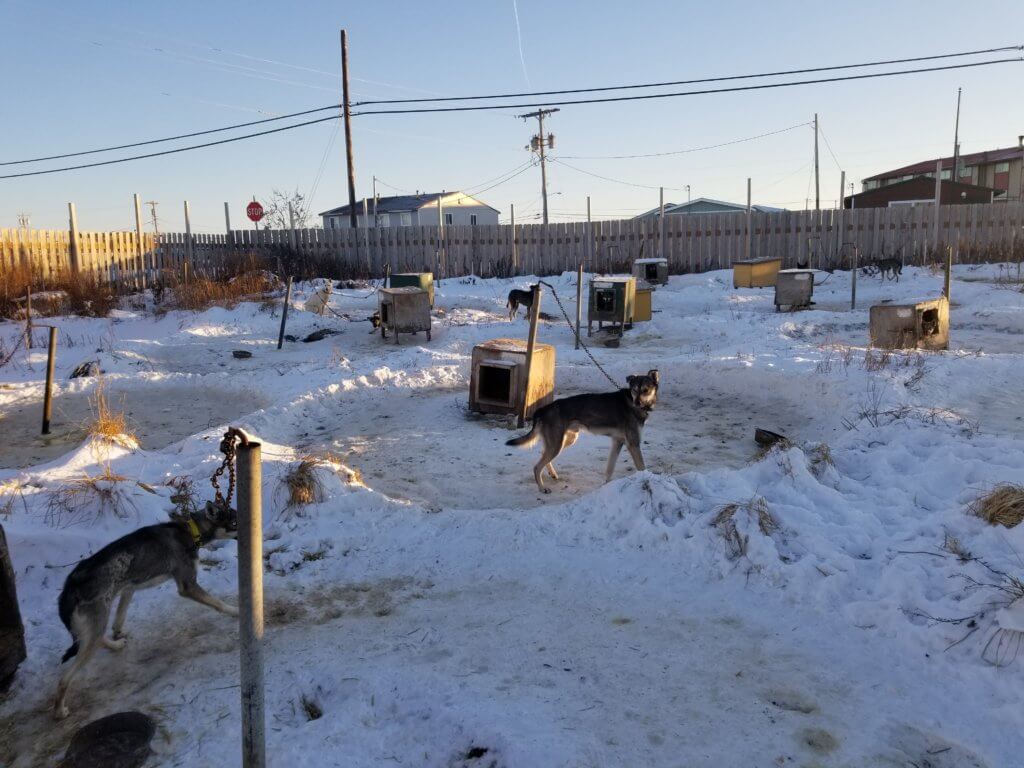
Dogs Struck in the Face, Forced to Run on Bloody Paws at Seavey Kennel
At three-time Iditarod champion Mitch Seavey‘s kennel, PETA’s eyewitness found scores of dogs continuously chained to barrels. Some had run in circles for so long that their paw pads were worn down or raw. Dogs were forced to run day after day, even when their paws or nails were bleeding.
Some workers hit them in the face to make them line up in front of the sleds.
One worker harnessed dogs next to each other who she knew had fought and said she would “kick them in the balls” if they fought again. After one training run, she boasted, “I just kicked [a dog] in his anus.”
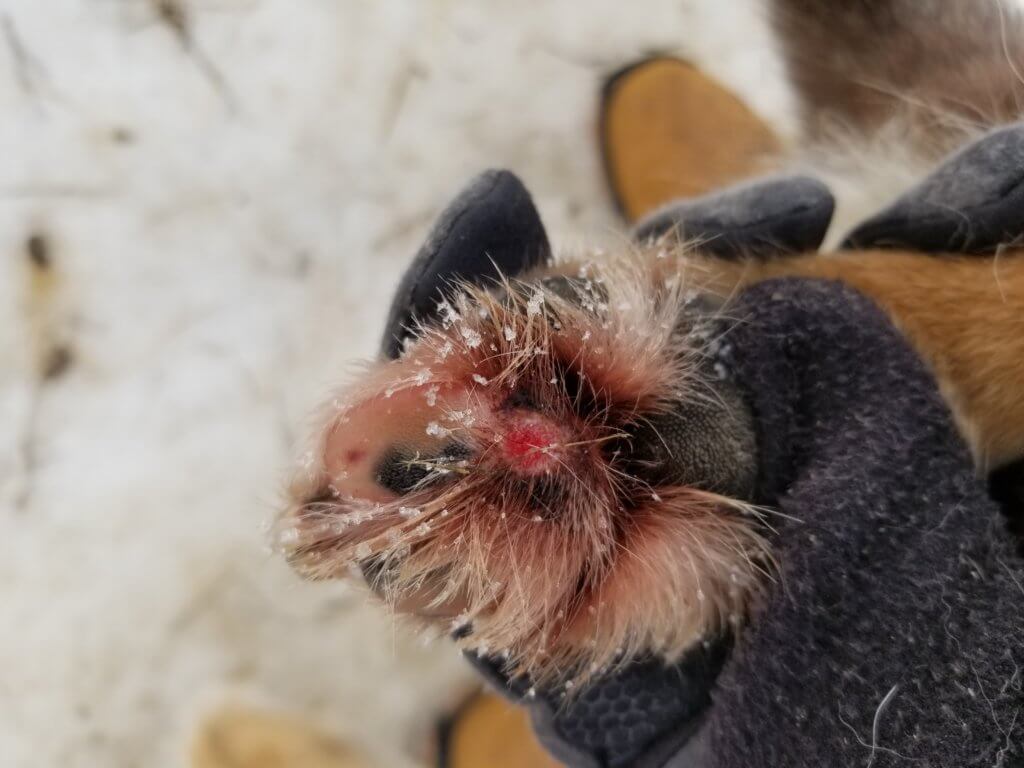

Champion Dog's Son Left With Ghastly Open, Pus-Filled Wounds
Captain, who staff said was a son of Seavey’s champion dog Kosher, had open, infected wounds on his neck, a result of the constant irritation caused by his collar as he paced back and forth at the end of a chain. A worker squeezed pus and ripped tissue out of the wounds barehanded and sprayed an antifungal product directly on them. No veterinarian saw Captain for his chronic wounds, which smelled like rotting flesh.
The worker said that kennel manager and 2019 Iditarod musher Ryan Santiago “hates this dog. Anytime I bring him in … Ryan’s just like, ‘Fuck him.’”
Santiago later said that “the best thing to do is open the cage and say, ‘See ya’”—suggesting that workers abandon the injured dog in the wilderness.
When a team of dogs broke free from a sled, one dog was dragged to death while another was dragged for up to 2.5 miles and left urinating blood. Some dogs’ tongues froze to metal harness lines and the skin was torn off, while others’ footpads bled profusely.
No veterinarian examined these dogs’ injuries.

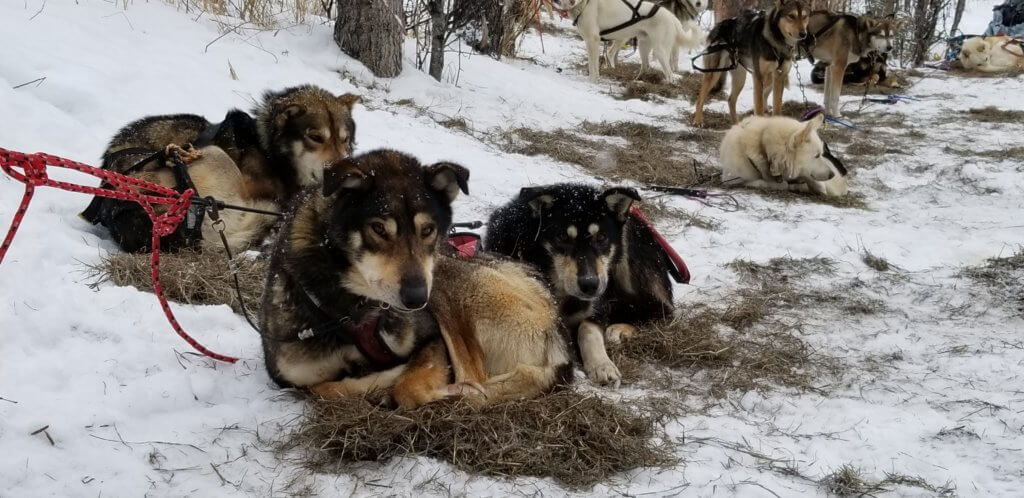
Injured Champion Dropped From Trail Sent Back to Kennel to Be Chained, Forgotten
Seavey raced Pilot, an aging Iditarod champion whom the kennel calls “the dog that makes Mitch [Seavey] great,” in the 2019 Iditarod, even though a worker admitted the dog had “a lot of problems” and “tears himself apart” while racing.
In 2019, when Pilot reportedly sustained the same injury that he’d had in the 2018 Iditarod, he was sent back to the kennel and chained back up but not promptly examined or provided with appropriate care.
After the 2019 Iditarod, Seavey told workers that he’d noticed that one dog, Rudder’s “breathing [had been] labored”—likely indicative of pneumonia, a common killer of dogs used in the race—but had still run him more than 50 additional miles before dropping him. At the Iditarod’s finish line in Nome, Seavey said that several dogs had suffered from diarrhea during the race but that he’d continued to run them. A kennel worker said that the dogs could sustain stomach ulcers from “all the stress” of the race.
Upon finishing, Seavey wondered aloud how much pain the dogs with injured, “split” paws had endured while running through saltwater and concluded, “It probably stings like crazy.” He said that Bug, whom he’d raced to the finish line, “was bleeding quite a bit” from one of his paws. One worker said that the dogs’ feet were “chewed up” and “hamburgered” and that the dogs “just ran 1,000 miles barefoot, essentially …. If we ran 1,000 miles, we’d have no feet.”
Another dog, Zephyr, had pus-filled wounds on his back legs as a result of being repeatedly hit by a metal bar as he ran, and a worker tore the scabs off them causing him to yelp in pain.
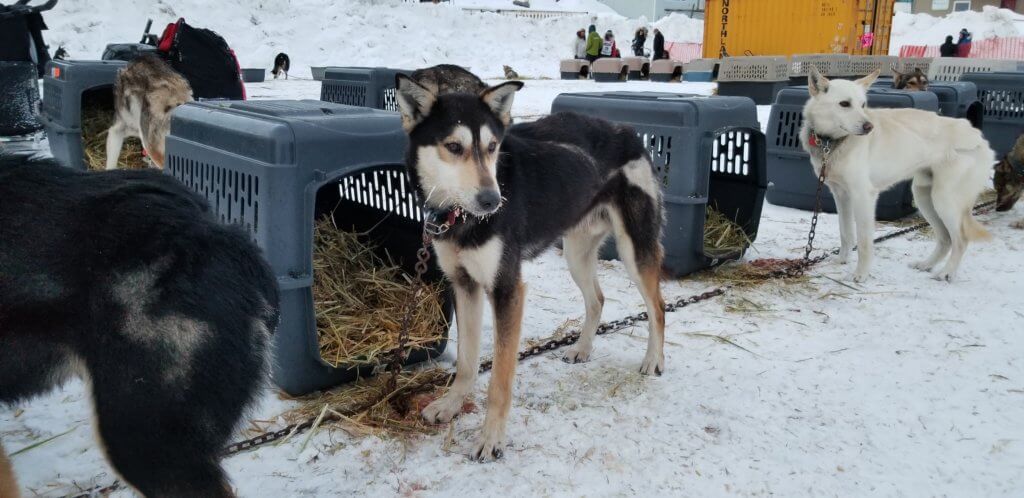

Dogs Need You to Help Stop This!
There are thousands of dogs just like Snickers, Birch, and Captain suffering in Alaska—all for the sake of mushers’ greedy pursuit of cash and “glory.” Dogs deserve far better than a lifetime of isolation, cruelty, suffering, and death on the Iditarod Trail.
Please never take a dog-sled ride. If you are planning a trip or cruise to Alaska, don’t buy any packages or excursions that include dog-sled rides or visits to dog kennels.
Please also urge Liberty Media/GCI and others to sever ties with the Iditarod immediately. Ask them if they really want their brand names to be associated with the cruelty in this industry. Demand that they immediately drop their endorsement of the cruel Iditarod and help spare these animals even one more day of agony.

